80Hz
British designer and architect Thomas Wing-Evans has created an interactive sound pavilion in collaboration with the DX Lab for the State Library of New South Wales in Australia, which takes paintings from the library’s collection and turns them into music.
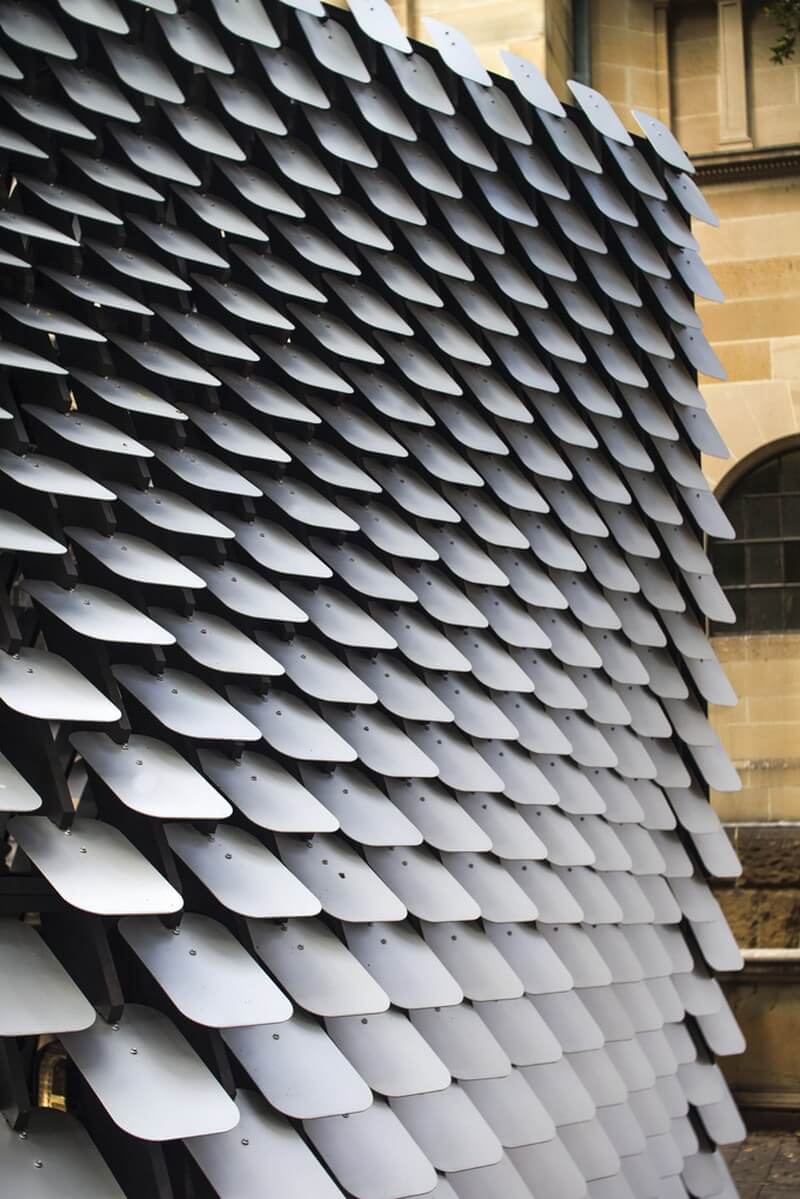 Located outside the Mitchell Reading Room in Sydney’s CBD, Wing-Evans’ pavilion features a curving black timber frame clad in matt anodized aluminum shingles.
Located outside the Mitchell Reading Room in Sydney’s CBD, Wing-Evans’ pavilion features a curving black timber frame clad in matt anodized aluminum shingles.
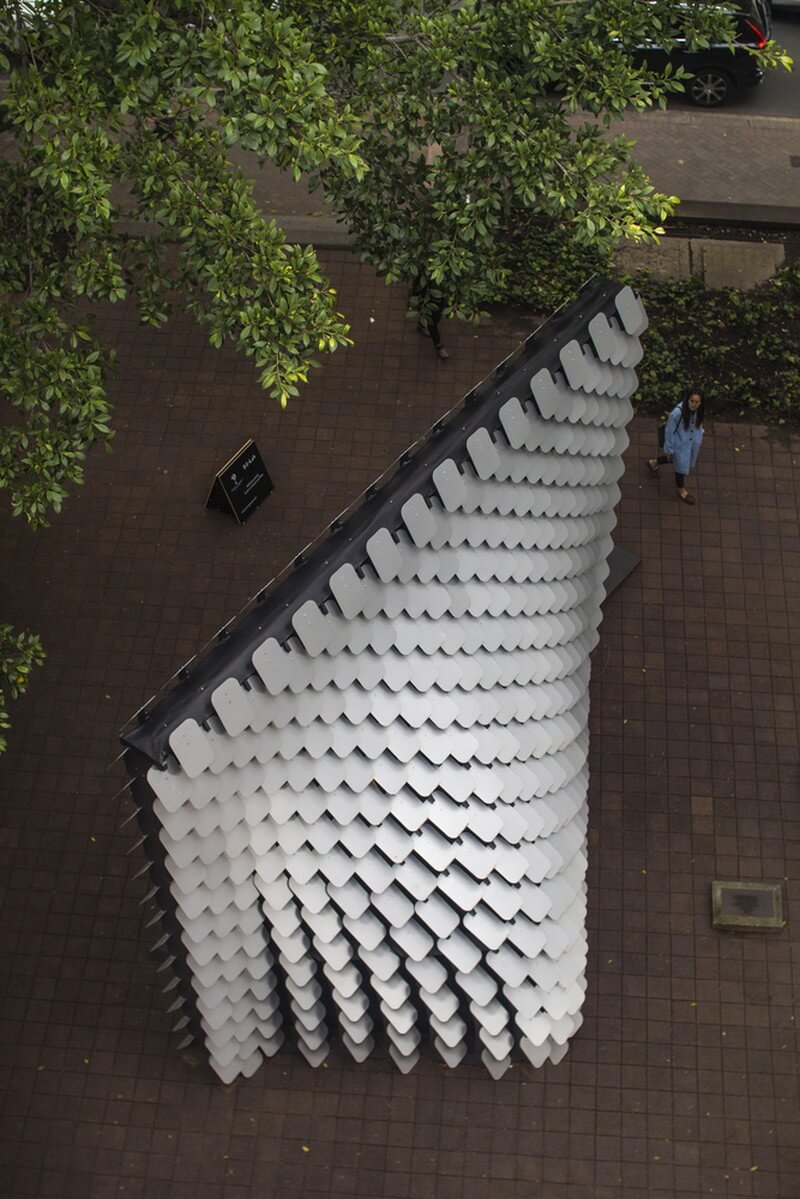
Working with studio Sonar Sound, a computer program was developed to translate visual data into sound. Images were analyzed for visual data such as complexity, color, tone and face detection, and metadata like date, location, and subject.
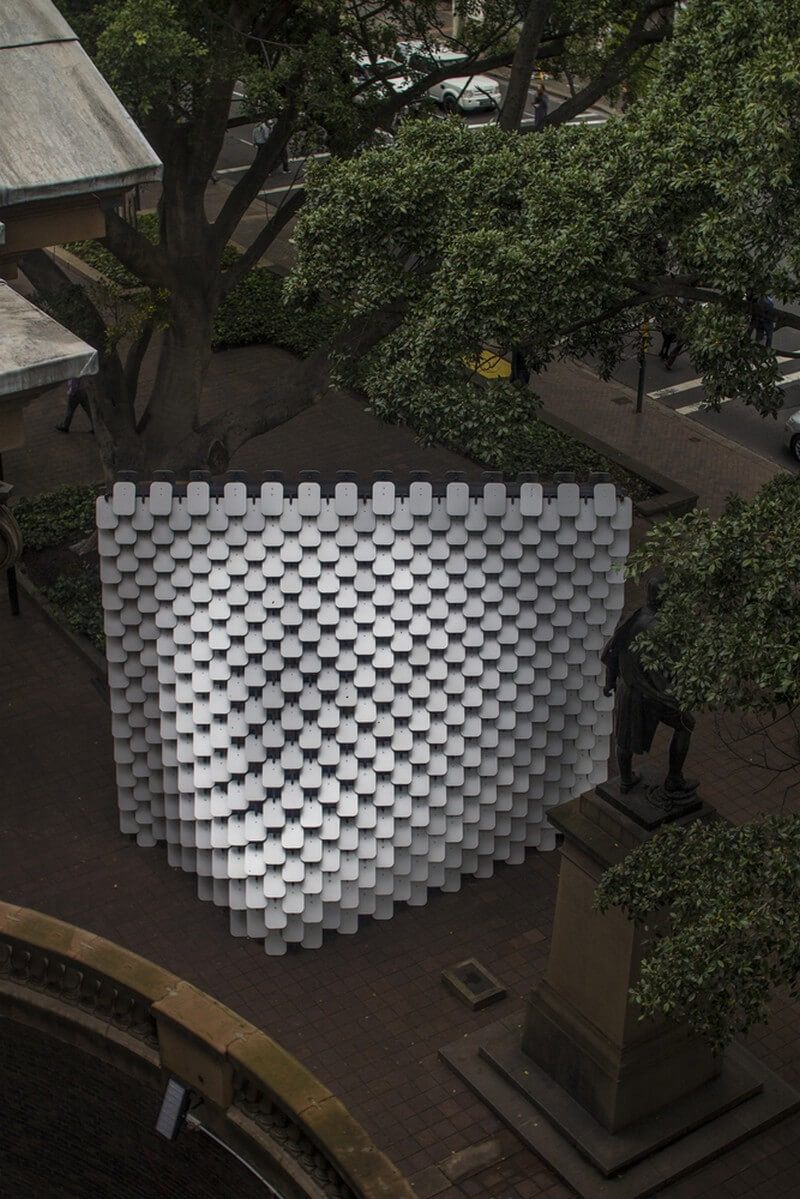
These values then formed the basis of computer-generated compositions. Inside the structure, a central mechanism displays a selection of paintings on a reel, like a real-life Instagram feed. Visitors can crank a handle to select an image and listen to its soundscape.

Multi-channel audio embedded in the floor and all corners creates an immersive experience that surrounds visitors and resonates through the structure. The metal cladding and geometry means that the sound reverberates, creating a unique acoustic space.
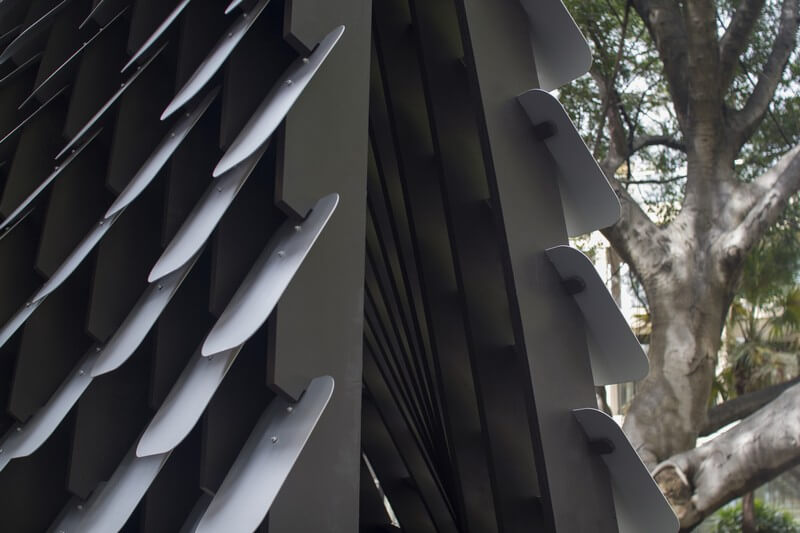
Beyond its acoustic qualities, designer’s intention was to create a structure that provides shelter while allowing visitors to feel rooted in the city and the natural elements. From above, the open shingles completely overlap, keeping the rain off while allowing daylight to enter into the space.
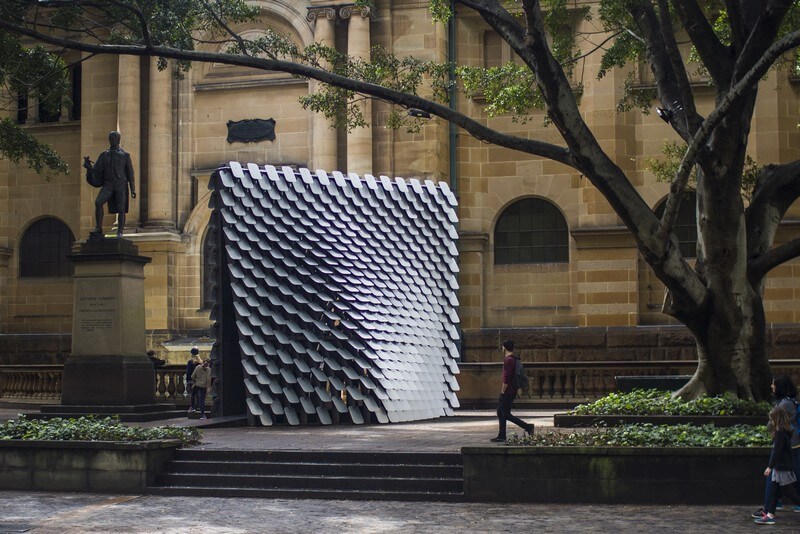
Openings at eye level allow passersby to peer inside and visitors to see out, which was key for making the space welcoming. At night, audio-reactive lighting pulsates through the cladding, attracting visitors to experience the State Library’s painting collection in an entirely new way.
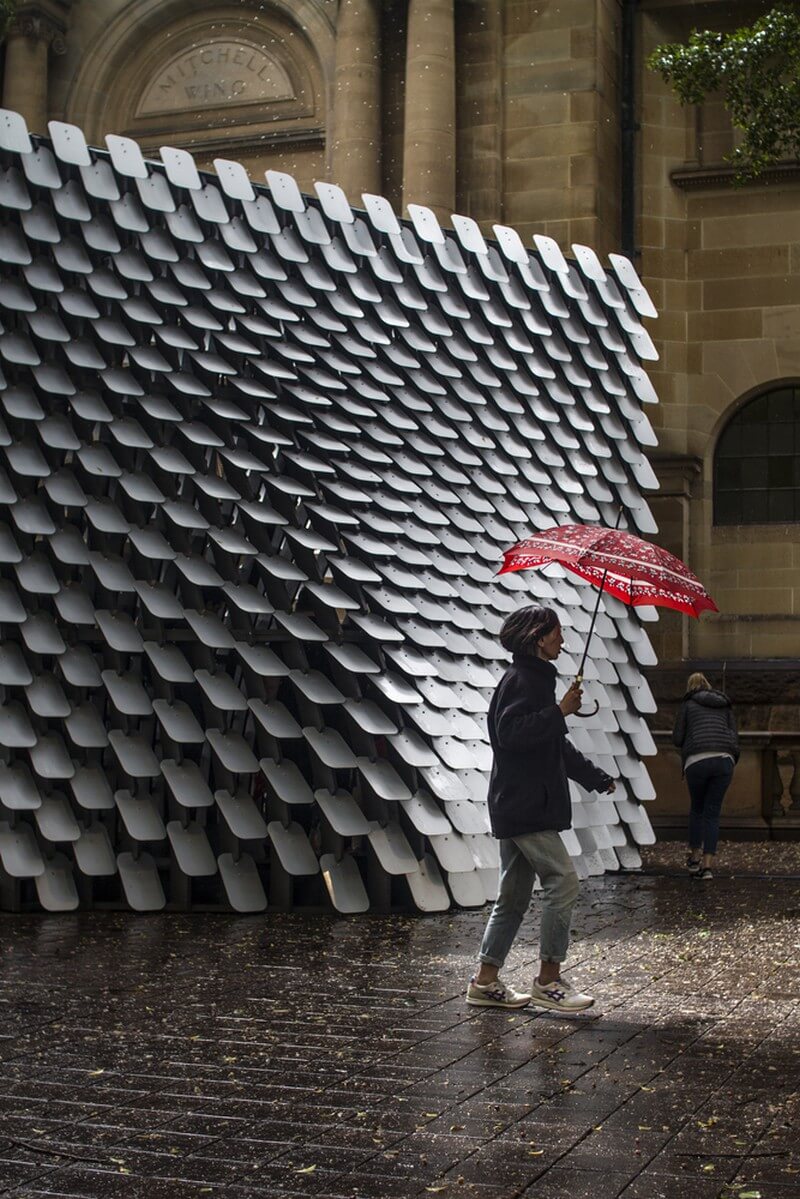




























Comments